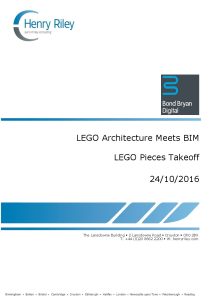LEGO Architecture meets BIM – Part 21: Costing

Introduction
We have looked in previous posts about how to create and check data. Of course creating reliable data means it can be used for other purposes. In the previous post we saw how the LEGO model data can produce an information takeoff and whilst this can be exported to a cost consultant it makes more sense to extract quantities and apply rates in a single piece of software.
I’m not a cost consultant but I do understand the need to provide reliable data for costing, so I asked Adrien Guillemet of Henry Riley to assist in producing a Bill of Quantities. Adrien has kindly set out below the process of taking our LEGO model in order to quantify the components within the model. The Bill of Quantity has been created using Exactal CostX (of course other similar software is available!).
Notes
It should be noted that there is a single piece in the model that is not modelled. This is the component to dismantle the model after completion. The data for this is in the LEGO model. I like to think of this as a Cost Consultant Easter Egg! Its a valuable piece of data that affects the final cost. Unfortunately though this piece of data is not available in Exactal CostX.
The Bill of Quantities in this case is a straight take-off of the components in the model, however other costs would be needed if we wanted to create a cost for the whole LEGO set. For example costs would need to be added for the instructions, plastic bags that hold the LEGO pieces, box and other packaging etc. So the cost generated is purely for the LEGO components and not the cost of the whole LEGO set!
Costing Process
Adrien guides us through the process of creating a Bill of Quantities in Exactal CostX:
1. All files are imported into CostX. We will use the FM Handover file as its IFC structure is the most suited to accessing and ordering IFC information fields into a cost estimate.
Image: Models imported into Exactal CostX (click to enlarge)
2. IfcSpaces are turned off to only leave the objects in the model. Ifc Spaces can be used to retrieve area information to calculate cost per specific spaces.
Image: Spaces switched off in Exactal CostX (click to enlarge)
3. The information schedule can be opened to assess the quality and availability of key information for building the cost estimate.
Image: Object Types on the left with the data for objects in the bottom right (click to enlarge)
4. In order to automate the quantity takeoff, we use a Model Map where information embedded into the model can be mapped per object (or assemble of objects). In this case we will use the “BIM Object Name” category to regroup the objects, and count how many different items in each category there are in the model.
Image: Model mapping in Exactal CostX (click to enlarge)
5. The result of the Model Map can be previewed before being imported into the project.
Image: Model map preview in Exactal CostX (click to enlarge)
6. The previewed model map output being satisfactory, we now use the model map on the FM Handover model to automate the quantity takeoff.
Image: Automating quantity take-off in Exactal CostX (click to enlarge)
7. Quantities are now populated into the Workbook of the LEGO project.
Image: Exactal CostX workbook (click to enlarge)
8. Here is how the cost estimate looks before being rated up.
Image: Exactal CostX cost estimate schedule without rates (click to enlarge)
9. We now use our cost database (in this case the Pick a Brick web database of LEGO objects) to rate our estimate.
Image: Rates extracted for use in Exactal CostX (click to enlarge)
10. The workbook fully rated up can now be exported into a template Henry Riley PDF for issuing.
Image: Exactal CostX cost estimate schedule with all rates applied (click to enlarge)
11. We can now issue a Bill of Quantity PDF file along with a CostX Freeviewer file version of the project that can be used by the client to clearly work out the links between the model and the cost estimate, thus allowing a better understanding of the project cost.
Image: Bill of Quantities exported as a PDF (click to enlarge)
The PDF cost plan produced by Henry Riley is here: BBLEGO-HR-ZZ-ZZ-BQ-Q-0001_LEGO_meets_BIM_BoQ.pdf
The cost plan can also be viewed with Exactal’s free viewer. The file for viewing is here: BBLEGO-HR-ZZ-ZZ-BQ-Q-0002_LEGO_meets_BIM_BoQ.exf (click to download)
To open the costx free viewer file, please download the free software here: http://www.exactal.com/en/costx/products/costx-viewer/ (note: sadly this only works on Windows and not on Mac OS)
Conclusion
Once again a big thank you to Adrien for assisting with this piece!
This piece demonstrates yet another use for our LEGO Architecture meets BIM project and importantly again using openBIM processes. The exchange of IFC with Exactal CostX is extremely good with GRAPHISOFT ARCHICAD models in my experience. I often here from individuals who claim that our IFC models don’t work. However 99% of the time this is because they either don’t understand the need to model map our data and are simply using a standard mapping table (usually the one for Revit) or they have not requested certain data from us.
Whilst Bond Bryan’s requirement for carrying out costing internally is currently limited we do have a passion for passing reliable geometry and data to other tools/users. So if there are issues we want to know about them!
One final plea to Cost Consultants! All to often we work hard to make our models as good as they can be but our architectural teams never get the cost plan back to review. We probably know the building better than anyone so please involve the teams in the process of understanding where cost has been attributed. I firmly believe that a more collaborative process can ensure more reliable cost plans and save on the need for value engineering (aka cost cutting!) later in projects.
More information
For any information regarding Quantity takeoffs for BIM projects please contact Henry Riley’s BIM team:
Adrien Guillemet (BIM & Information Manager)
Adrien.guillemet@riley-consulting.com
OR
Andrew Turner
Andrew.turner@riley-consulting.com
Rob Jackson, Associate Director, Bond Bryan Architects
Terms and conditions
All content provided on this BIM Blog is for informational purposes only. The owner of this blog makes no representations as to the accuracy or completeness of any information on this site or found by following any link on this site. Bond Bryan Architects will not be liable for any errors or omissions in this information nor for the availability of this information. Bond Bryan Architects will not be liable for any losses, injuries, or damages from the display or use of this information.
We are happy for others to share our blog pieces through all social media platforms. You may include links to the original blog pieces and use part of the blog to then provide a link to the original content. However we would appreciate it if the content is not reproduced in full on other sites or publications without written consent being granted by Bond Bryan Architects.
This policy is subject to change at any time.
LEGO and the Lego logo are trademarks of the LEGO Group. Any trademarks, service marks, product names, corporate names or named features are assumed to be the property of their respective owners, and are used only for reference, without intent to infringe.
















